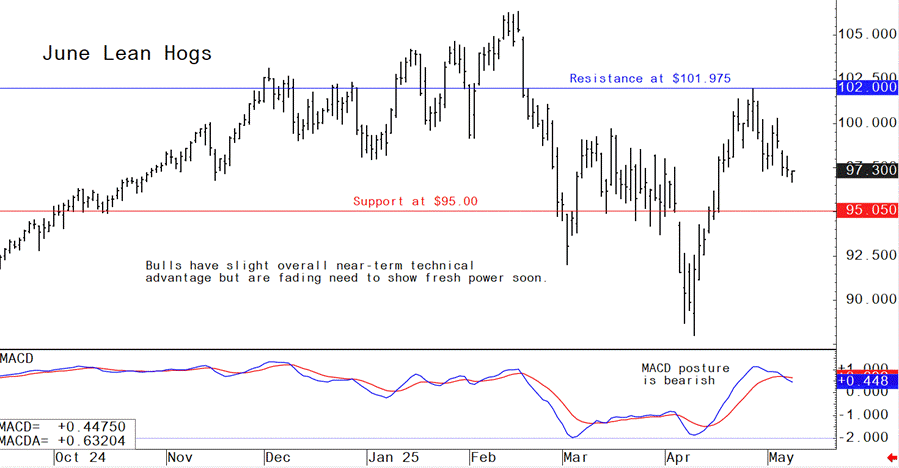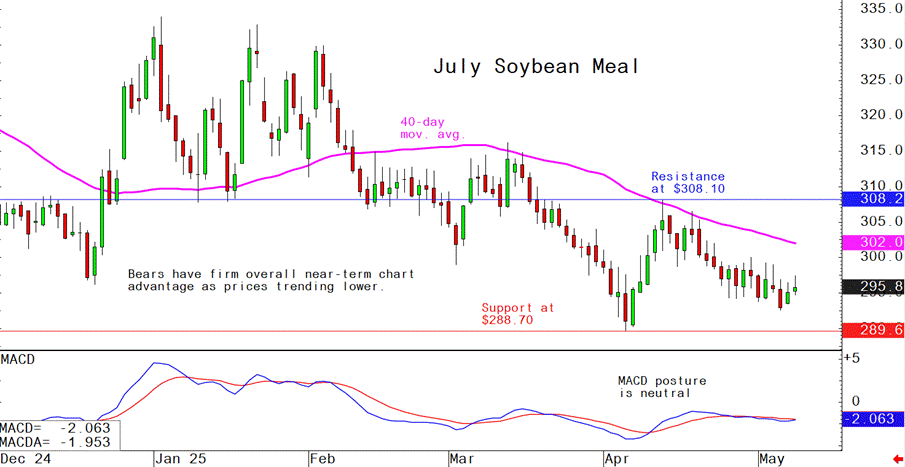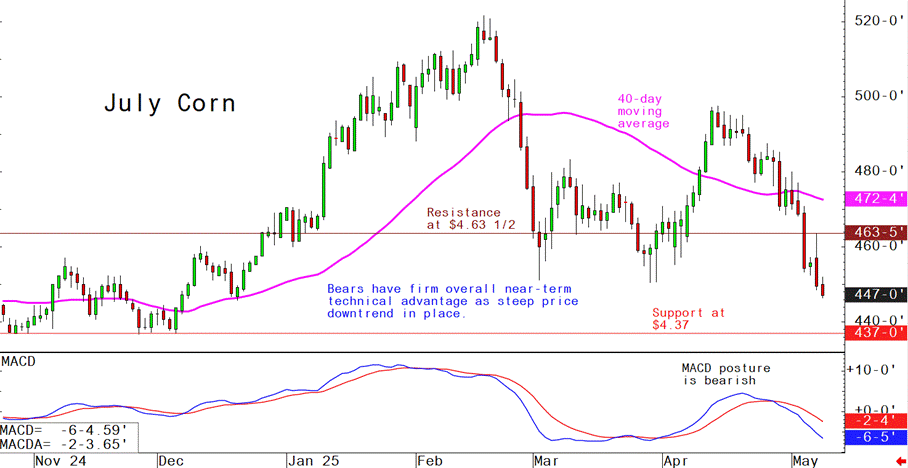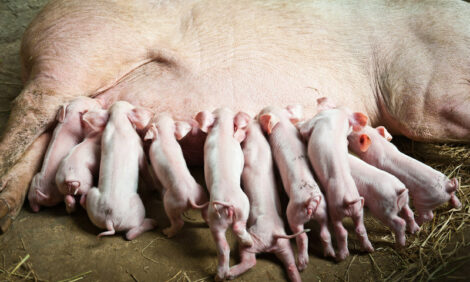



Pig outlook: Lean hog futures bulls fade a bit
Livestock analyst Jim Wyckoff reports on global pig newsJune lean hog futures prices late this week hit a three-week low and a price uptrend on the daily bar chart has been negated. Still, bulls can argue the daily bar chart for June hogs now shows a bullish pennant pattern has developed. Hog bulls also remind that the hog futures market has continually shown keen resilience on price setbacks over the past few months. Fundamentally, the latest CME lean hog index is up 3 cents to $90.16 as of May 6. Pork cutout was down16 cents to $95.54 on Wednesday, holding within the choppy range of the past six weeks. Pork cutout values continue to trade sideways as uncertainty regarding global trade continues to weigh on the hog markets.
Latest USDA and other news regarding the global pork industry
Weekly USDA US pork export sales
Pork: Net sales of 24,200 MT for 2025 were down 30 percent from the previous week, but up 14 percent from the prior 4-week average. Increases primarily for Mexico (9,900 MT, including decreases of 2,100 MT), Japan (3,500 MT, including decreases of 100 MT), South Korea (3,000 MT, including decreases of 200 MT), Canada (1,800 MT, including decreases of 100 MT), and Australia (1,500 MT), were offset by reductions for Denmark (100 MT). Exports of 25,600 MT were down 1 percent from the previous week and 10 percent from the prior 4-week average. The destinations were primarily to Mexico (11,000 MT), Japan (4,400 MT), South Korea (3,500 MT), Colombia (1,800 MT), and Canada (1,000 MT).
US meat industry seeks competitive edge in Vietnam amid tariff disparities
The US meat sector is striving to enhance its presence in Vietnam's burgeoning market, where demand for imported meat is projected to reach $1.7 billion in 2024 — a 14.2% increase from the previous year. However, American exporters face significant challenges due to higher tariffs compared to competitors from countries with free trade agreements (FTAs) with Vietnam.
Tariff disparities impacting US competitiveness. US meat exports to Vietnam are subject to Most Favored Nation (MFN) tariffs, which are notably higher than those for countries within the Comprehensive and Progressive Agreement for Trans-Pacific Partnership (CPTPP) and other FTAs. For instance, US frozen pork faces a 10% MFN tariff, while CPTPP members like Canada and Mexico benefit from zero tariffs Similarly, US beef imports can incur tariffs up to 30%, whereas Australian and New Zealand beef enter Vietnam duty-free under existing agreements.
Vietnam’s expanding meat import market. Vietnam’s meat import sector is experiencing significant growth, driven by urbanization, rising incomes, and a growing middle class seeking premium and processed meat products. In 2024, the country imported approximately 876,670 tons of meat and meat products, valued at $1.78 billion, marking an 18.1% increase in value compared to 2023. India remains the largest supplier, accounting for over 22% of total imports, followed by Brazil and Russia.
US industry efforts and strategic positioning. To address these challenges, US industry groups like the US Meat Export Federation (USMEF) are focusing on trade promotion, consumer marketing, and supporting Vietnamese importers with training and incentives. They emphasize the superior quality and safety of US meat, produced under strict standards and modern inspection systems. The grain-based feed used in US livestock production also results in meat that aligns with Vietnamese consumer preferences for tenderness and flavor.
The recent imposition of a 46% US tariff on Vietnamese products has placed significant strain on US/Vietnam trade relations, threatening Vietnam’s export-driven economy and complicating bilateral ties. Key Vietnamese export sectors — such as electronics, textiles, footwear, and furniture — are particularly vulnerable, as the US is their largest market, and these goods now face steep price disadvantages. The tariff is five times higher than Vietnam’s average import tax on US goods, highlighting the imbalance and fueling tensions. President Trump previously announced a temporary 90-day suspension of the tariff, reducing it from 46% to 10% while both sides pursue a longer-term agreement. Vietnam has also offered to drop tariffs on US imports and pledged to address concerns over transshipment of Chinese goods through its territory. Despite these efforts, the uncertainty has already disrupted supply chains, threatened jobs, and raised concerns about global economic stability.
Looking ahead. As Vietnam continues to negotiate and implement trade agreements, the US meat sector is lobbying for reduced tariffs and more favorable trade terms to remain competitive and meet the rising demand in this dynamic market. Engaging in future trade negotiations and exploring potential FTAs could be pivotal for US exporters aiming to solidify their foothold in Vietnam’s expanding meat market.
Global food commodity prices rose in April
That’s according to the United Nations Food and Agriculture Organization (FAO), with the FAO Food Price Index averaging 128.3 points— up 1% from March’s 127.1 points and 7.6% higher than April 2024. The increase was primarily driven by higher prices for cereals, meat, and dairy products, which outweighed declines in sugar and vegetable oil prices.
Key drivers behind the April increase
Meat:
- The FAO Meat Price Index climbed 3.2% from March, with prices rising across all categories. Pork saw the largest increase, particularly in the EU, due to stronger global import demand and the lifting of disease-related restrictions on German exports.
- Beef and sheep meat prices also increased, supported by steady import demand and limited global supplies, especially from Australia and Brazil.
- Poultry prices rose moderately, especially in Brazil, where robust demand and holiday-related processing slowdowns tightened exportable supplies.
The next week’s likely high-low price trading ranges:
June lean hog futures--$95.00 to $101.975 and with a sideways bias
July soybean meal futures--$289.70 to $308.10, and with a sideways bias
July corn futures--$4.40 to $4.70 and a sideways-lower bias
Latest analytical daily charts lean hog, soybean meal and corn futures










